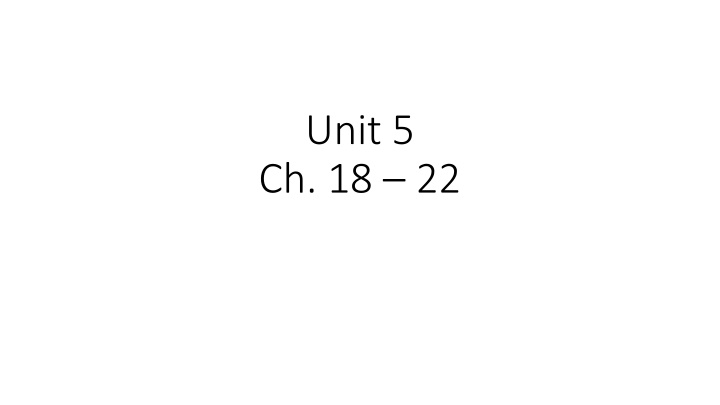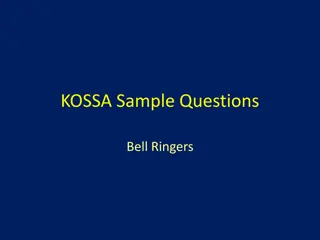
Central Limit Theorem and Sample Proportions in Statistics
Explore the Central Limit Theorem in AP Statistics, focusing on sample proportions, population proportions, and confidence intervals. Learn about conditions and assumptions for statistical analysis based on sampled data.
Download Presentation

Please find below an Image/Link to download the presentation.
The content on the website is provided AS IS for your information and personal use only. It may not be sold, licensed, or shared on other websites without obtaining consent from the author. If you encounter any issues during the download, it is possible that the publisher has removed the file from their server.
You are allowed to download the files provided on this website for personal or commercial use, subject to the condition that they are used lawfully. All files are the property of their respective owners.
The content on the website is provided AS IS for your information and personal use only. It may not be sold, licensed, or shared on other websites without obtaining consent from the author.
E N D
Presentation Transcript
Unit 5 Ch. 18 22
Ch. 18 Central Limit Theorem AP Statistics CENTRAL LIMIT THEOREM Two assumptions: 1. The sampled values must be independent 2. The sampled size (n) must be large enough The mean of a random sample has a sampling distribution whose shape can be approximated by a Normal model The larger the sample, the better the Normal approx. will be This is regardless of the shape of the population distribution
DISTRIBUTION OF SAMPLE PROPORTIONS Population has a fixed proportion (p) To find the population proportion a sample is taken and a sample proportion (p) is calculated If samples are repeatedly taken with the same sample size The mean of the sampling distribution would be the same as the population proportion: The standard deviation would be
Conditions to check for the assumptions: 1. Success/Failure condition: n*p and n*q > 10 2. 10% condition: population > 10*n 3. Randomization: SRS or sample can be assumed to be representative of the population All conditions have been met to use the Normal Model for sample proportions
If samples were repeatedly taken with the same sample size then from the CLT (Central Limit Theorem), the distribution would be approximately Normal
Example: According to the manufacturer of the candy Skittles, 20% of the candy produced is the color red. What is the probability that given a large bag of skittles with 60 candies that we get at least 25% red? Conditions: Model: Answer:
Ch. 19 CONFIDENCE INTERVALS For single sample proportions
Confidence Interval: FORM: Example: Presidential Polls: 56% 3% statistic + margin of error 56% 10% Confidence Intervals are based on 3 things: 1) The _____________________________ 2) The _____________________________ 3) The _____________________________ confidence level sample proportion sample size
* The confidence level gives us the... certainty that the true value is in the interval * Example: Presidential polls again 65% 5% with 60% confidence 65% 10% with 95% confidence 65% 6% with 90% confidence
Ch.19: Confidence Intervals for a population proportion Parameter we are estimating: _____ Statistic we are using: ________ statistic + margin of error FORMULA: For a confidence interval of the population proportion Z* is called the ________________________ critical value 3 most common levels of confidence for Confidence Intervals and their Z* 90% confident 95% confident 99% confident Z* = 1.645 Z* = 1.960 Z* = 2.576
Sentence Interpretation: We are ____% confident that the true % of ______ is between _____ and ______ %. Example: President Obama 45% approval rating, MOE of 3%, 95% confidence: We are 95% confident that the true % approval rating of President Obama is between 42% and 48%.
Conditions (for 1-Proportion Z-Intervals) (1) Random (2) success/failure (3) 10% condition (1) Stated random OR assumed representative (2) np > 10 nq > 10 (3)There are more than 10n things If all conditions are met, then we can say p has model: and we can use normal model for 1-Proportion Z-Interval
Example: We want to know the real improvement rate for a new medication. We conduct an experiment and find that out of 53 randomly selected subjects, 27% of them report improvement with the new medications. Create a 95% confidence interval (and interpret)
Example: We take a simple random sample of 95 Bucks county residents and find that only 20 of them approve of a new property tax to pay for repairs to local roads. Estimate with 99% confidence the true percent of people who approve of the tax.
EXAMPLE: We take a sample of 200 M&Ms from a large bag and find that 32 of them are orange. Create a 90% confidence interval for the true proportion of orange M&M s in any bag. No interpretation, no conditions. Change to 95% confidence: Change to 99% confidence:
Conclusions: - As the Confidence Level increases: The critical value INCREASE The Margin of Error INCREASE The Confidence Interval gets WIDER
Changing Sample Size Repeat the M&M example but use the sample size below. (original info: 90% confidence, x = 32, n = 200) n = 200 (11.736%, 20.264%) n = 400 n = 800
Conclusions: - As the Sample Size increases: Critical value SAME The Margin of Error DECREASE The Confidence Interval gets NARROWER
NOTES: What does ___% confidence really mean?? In repeated random samples of ______, the confidence intervals created will catch the true parameter ___% of the time. _____% of all random samples of ______ will produce confidence intervals that catch the true parameter. So for our activity: M&M example: We take a sample of 200 M&M s from a large bag and find that 32 of them are orange. We created a 90% confidence interval: (0.11736, 0.20264)
Things that affect the MOE: * sample size * confidence level If we want a particular MOE, we can set a level of confidence and a sample size in order to attain that MOE.
Example: Let's go back to our example about the improvement rate with a new medication. We found 27% improvement. How many subjects would we need in a new experiment to make a 95% conf. interval while still keeping a 5% MOE?
NOTE: If you are not given p, you can use 0.50. Why? * It doesn t favor either outcome (success or failure) * It will give you the largest sample size. If you try any other value of p, you will notice a smaller numerator. Ex: (0.5)(0.5) = 0.25 (0.6)(0.4) = 0.24 (0.7)(0.3) = 0.21
Example: What sample size must be used to estimate the outcome of a political election with a margin of error of 3% and 99% confidence?
Example: What sample size must be used to estimate the true percent of left- handed people in the nation with 90% confidence and a margin of error of 8%? Assume that it has been shown in previous research that the percent of left- handed people was 38%.
Example: What sample size must be used to estimate the true percent of left- handed people in the nation with 90% confidence and a margin of error of 8%? Assume that it has been shown in previous research that the percent of left- handed people was 38%.
(c) 95% of all random samples of 582 accidents will produce confidence intervals that catch the true % of accidents in which teenagers were driving. (d) 1/5 = 20% Interval = (0.12685, 0.18586) Our interval contradicts the politician s statement. The entire interval is below 20%, therefore I am 95% confident that the true percent of accidents with teenage drivers is less than 1 in 5 (20%).






















